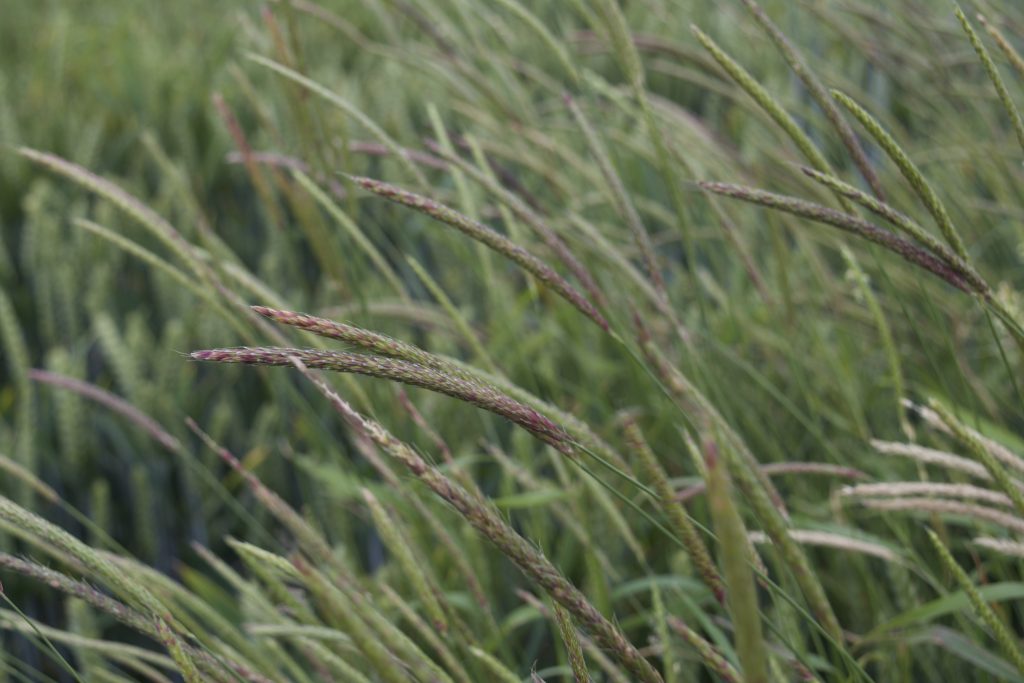Zero tolerance approach to black-grass vital
22nd August 2016
Arable farmers in East Anglia have been battling black-grass for a number of years, but it is perhaps more important now to adopt a zero-tolerance strategy on black-grass to safeguard winter wheat and oilseed rape crop production.
Arable farmers in East Anglia have been battling black-grass for a number of years, due to their heavy soils and predominantly winter cropping, but it is perhaps more important now to adopt a zero-tolerance strategy on black-grass to safeguard winter wheat and oilseed rape crop production.
Black-grass continues to increase across East Anglia even on the lighter soils of North Norfolk, says Hugo Pryce, BASF’s regional agronomy manager.
We have had to contend with black-grass for many years on the heavier soils but now it is well established on the lighter soils in North Norfolk, too, says Hugo.
Hugo says that black-grass seed is thought to be brought onto new farms by machinery, contractors, straw, muck spreaders, imported muck etc. “It has become more of an obvious problem since 4-5 years ago when chemistry started to break down.”
“The new and existing populations can be resistant to many contact herbicides. Although the percentage of farmers who have actually tested their black-grass seed remains low, adds Jared Bonner, agronomy manager for Suffolk and Cambridgeshire.
“Farmers just look at the weed control result in the field and make assumptions that they have resistance without any test verification. The general consensus is ‘I know I have some resistance so why should spend the money finding out?!’ Resistance testing costs around £250 per sample but growers are spending over £100/ha controlling black-grass anyway!” adds Jared. BASF have tested black-grass and found enhanced metabolism and target site resistance in the same population, but it is still important to test to see what you are dealing with and what the level of resistance is.
“A robust zero tolerance approach is critical to safeguard winter wheat and oilseed rape production in the long term on affected farms.”
Results from BASF trials show just 10 black-grass plants/sq m will typically produce 100 heads/sq m. “While that doesn’t sound very much, those heads will produce enough seed in volume terms to fill a one tonne bag.”
“That equates to eight bags being spread across a 10ha field, compared with just 1.5t of wheat seed drilled. Ten black-grass plants/ha can reduce yield by 13% and 50 plants/sq m can halve yield.”
Prevention is better than cure, he says. Once the weed is present, cultural and chemical techniques should be combined to achieve effective control and minimise development of resistance.
“Cultural methods need to provide a solid base so herbicides can finish the job and provide sufficient control. In general, the low resistance risk herbicides are the pre-ems, so it is increasingly important to get the most out of them.”
Establishing a stale seed-bed, stirring the top 50mm with a light cultivator, rolling it once the combine has done its work, then spraying off resulting black-grass flushes with glyphosate, more than once if necessary, is key to reducing populations before drilling the next crop. Correct cultivations are also important.
“If you know where the seed is, you can manage it, shallow cultivations will keep seed in the top 50mm. This, perhaps combined with rotational ploughing every five or six years, is key.”
“Farms are adopting a more diverse rotation, including spring crops. Oilseed rape is still instrumental as a cleaning crop.”
Winter wheat drilling in the worst fields should be delayed until at least mid-October where possible. Spring cropping offers more opportunities to control black-grass out of crop. Sugar Beet, as part of our traditional East Anglia rotation helps to clean up land a bit, it is a reasonable break crop, but you really need more than two spring crops to break the black-grass cycle, Jared advises
Pre-emergence spray programmes should be based on full rates of flufenacet, pendimethalin, and diflufenican as Crystal + Hurricane or Liberator + Stomp Aqua, he advises.
“This provides three different but complementary modes of action for grass and broad-leaved weed control. For difficult to control black-grass, many farmers in East Anglia are also introducing Avadex granules pre-emergence into the programme, these have a different mode of action and help sensitise weeds to other pre-em chemistry.”
Preventing seed return is a key component of a zero-tolerance approach, he adds. “There is a very powerful argument to spray off affected crop areas, or whole crop them for forage.”
But Jared Bonner adds a cautionary view “The jury is still out as to whether we are getting on top of black-grass in East Anglia. Most would say we are standing still and not moving forward. Last year didn’t help. Control looked good in the autumn and winter but the surviving black-grass then just grew and grew in the mild winter conditions. I saw some plants that had as many as 29 tillers, but I’ve heard of people with black-grass plants that had in excess of 45 tillers this spring. The weed seed return this year will be horrendous.”



